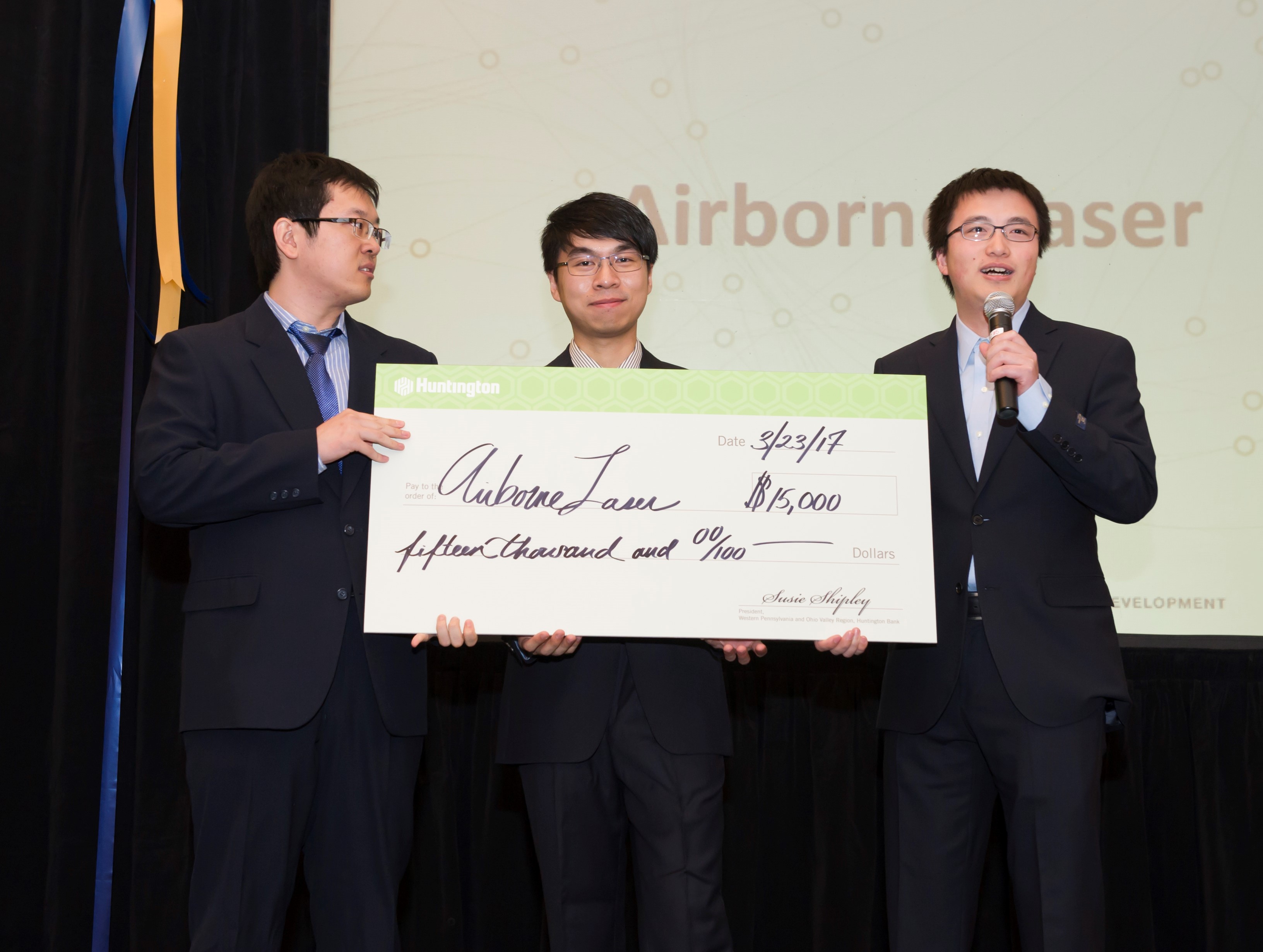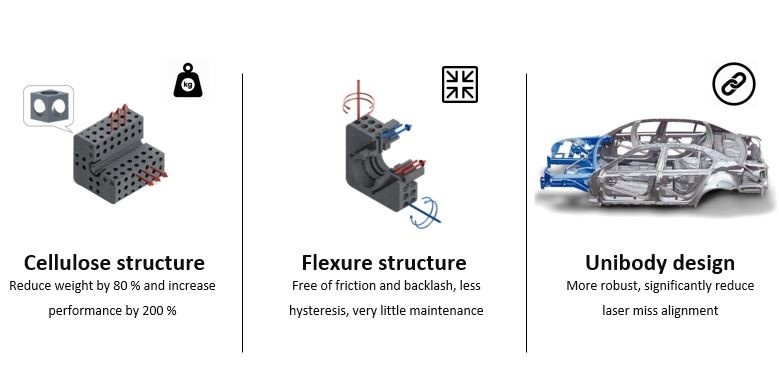Last year, Shuo Li stepped out of Dr. Kevin Chen’s lab donning a blazer and tie, not the everyday outfit for an electrical and computer engineering graduate student. Shuo and two other colleagues, Aidong Yan and Ran Zou, had created their team called “Airborne Laser” just six weeks earlier and were on their way to the final pitches of the Randall Family Big Idea Competition, an experience-based learning opportunity open to all Pitt students. What they did not expect was that they would reach the final round of the competition and end the night on stage clutching a giant check made out for $15,000.

Shuo and his team initially didn’t have a business idea or a particular problem to solve, but they did have a technology inspired by the most advanced rover ever built by NASA.
The rover “Curiosity” has 17 cameras, a robotic arm, and a powerful laser. Its mission? To determine whether Mars is habitable to microbial life.
Six years ago, Curiosity landed on Mars and its laser is still analyzing the elemental composition of vaporized materials, helping scientists to determine the chemical composition of the Martian surface. The technology Shuo and his team developed added a new dimension to all of this.
How do you take a technology designed for use on another planet and make it useful here on earth?
That's where developing an entrepreneurial mindset comes in to play. Shuo and his teammates explored numerous avenues for making the technology commercially viable, which led them to apply their technology to assist industrial firefighters.
The Airborne Laser team designed a compact laser system using 3-D printing that can then be mounted onto a drone where it performs chemical sensing in real time. Their innovative mechanical design is what really sets their technology apart from previous lasers. The Airborne Laser is 3-D printed into a single-piece unit or a uni-body design which eliminates the need for assembly and creates a more cost-effective product. Without the need for excess parts and screws, the new design also allows for superior thermal management performance, making it more durable in harsh environments.

“Firefighters save our lives, so we want do something to save their lives.” Shuo said.
Using their laser, firefighters would be able to know in advance what potential hazards are lurking in buildings before they enter. Shuo said this is important to him because in August 2015, in the Chinese port of Tianjin, more than 150 people lost their lives and a total of 797 people were injured due to a chemical explosion. Twenty-one firefighters were among those that lost their lives, making the disaster the deadliest for Chinese firefighters in more than 60 years.
After the Big Idea Competition, Shuo and his team took the momentum from their $15,000 win and participated in the National Science Foundation Innovation Corps. NSF I-Corps provided Airborne Laser with an additional $50,000 in pre-commercialization funding. Shuo says they are looking to broaden the laser’s applications by expanding it for use in industrial, consumer, environmental and military areas. For example, the laser could be used to monitor a gas pipeline for leaks or monitor chemicals in farmland soil. Shuo’s innovation has the potential to advance current drone capabilities and protect humans from exposure to hazardous chemicals.
The 10th Annual Randall Family Big Idea Competition Awards Celebration will take place this Thursday, March 29, 2018, starting at 4 p.m. in the Charity Randall Theatre. The event is free and open to the public. Register in advance to see how Pitt students are bringing their big ideas to life again this year. Meet the teams here by watching their videos and casting your vote!
